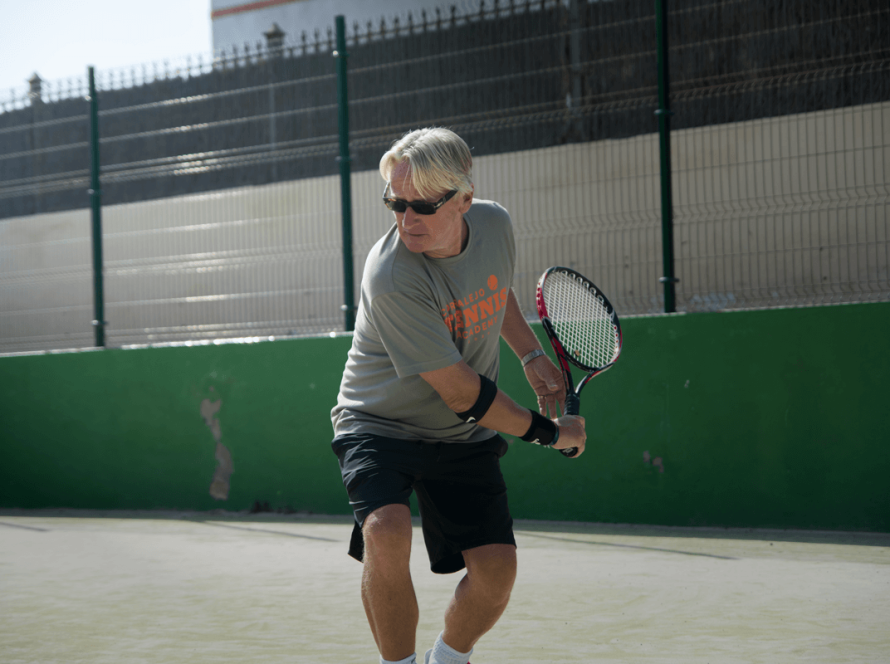Improving tennis players get sometimes confused regarding the open vs closed stance position. You see the pro’s on TV that play almost exclusively all their forehands from an open stance position and then you get to your training session and your coach tells you to play everything from a closed stance. Why doesn’t he teach you the same stuff that professionals do?
Open stance forehand
It is true that open stance forehands are widely used among the pro’s and have some major advantages over closed stance forehands.
First, by playing from an open stance position you save one step when getting to the ball and additionaly you are able to hit the ball with more top spin. Playing from an open stance requires good transfer of body weight and good body rotation for a back swing, which are not always easy to execute in the early learning stages. Closed stance forehand, with your left foot in the front (right handed person,) ensures that your body does the necessary body rotation for back swing and by keeping your body weight on your front foot throughout the whole stroke makes it bio mechanically a much easier shot than an open stance forehand. So like in karate, where you get different belts representing your improvement, the closed stance forehand is the basic stroke and the open stance is an advanced move. First learn to play forehand in the closed stance and only then start to progress to the open stance.
Although open stance forehand is in 90% cases a better option, there are situations when closed stance is the preferred choice. For example when you are making an approach shot from a very low ball somewhere around the T line – closed stance with extremely bent knees is the right thing to do. Also when you try to hit an extremely hard ball, you can generate more power from a closed stance.
Open stance backhand
So far I have been talking only about forehands – this is because I am not a big fan of open stance backhands. I believe that a player can always hit better backhand from a closed stance and it should always be his/her primary choice. When you play a backhand (one or two handed), you cannot make a natural back swing when you keep an open stance. Your right shoulder (if you are right handed) does not allow you to take the racket very far back (try it). This means that your racket will travel only a very short distance to the contact point and it naturally cannot create enough speed to hit the ball hard. This is maybe not such a big deal in women’s tennis (that’s why they play open stance backhands more often than men), but it is a very hindering factor in men’s tennis, where open stance backhand is used only in “last option” situations. This is opposite to open stance forehand, where this is a “must” for a professional player.



